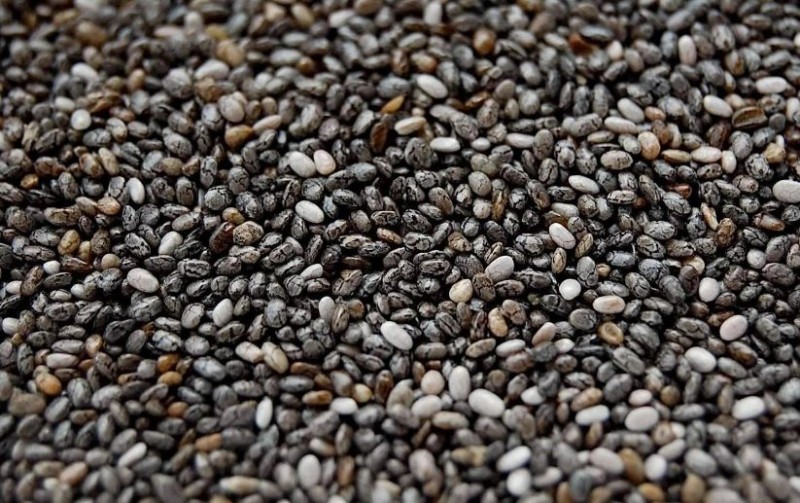
Chia seeds have gained widespread popularity in recent years due to their numerous (How to eat chia seeds) health benefits and versatility in various culinary creations. These tiny black or white seeds are rich in nutrients such as omega-3 fatty acids, fiber, protein, antioxidants, and minerals. While chia seeds offer a plethora of advantages when incorporated into one's diet, there are misconceptions and incorrect consumption methods that might hinder the potential benefits. In this article, we will explore the right ways to consume chia seeds to (How to eat chia seeds) ensure maximum nutritional gain and address the potential pitfalls of improper consumption.
Understanding Chia Seeds
Chia seeds, derived from the plant Salvia hispanica, have been consumed for centuries by ancient civilizations like the Aztecs and Mayans. Their nutritional profile has led to their recognition as a "superfood" in the modern world. These seeds boast remarkable properties, such as the ability to absorb liquid and form a gel-like consistency. This property makes them useful for thickening recipes and creating unique textures in foods.
The Nutritional Powerhouse
Chia seeds are a nutritional powerhouse, offering a range of benefits that contribute to overall well-being. They are an excellent source of plant-based protein, making them a favored choice among vegetarians and vegans. The presence of omega-3 fatty acids, specifically alpha-linolenic acid (ALA), promotes heart health and reduces inflammation in the body. Additionally, chia seeds are rich in dietary fiber, which aids in digestion, promotes a feeling of fullness, and helps regulate blood sugar levels.
Common Mistakes in Chia Seed Consumption
Despite their numerous benefits, there are common mistakes that people make when consuming chia seeds, potentially diminishing their nutritional value and even causing negative effects. Let's explore these mistakes and how to avoid them:
Consuming Dry Chia Seeds: One of the most significant mistakes is consuming chia seeds dry, without soaking or hydrating them. Dry chia seeds can absorb moisture from the digestive tract, potentially causing dehydration or an uncomfortable feeling in the stomach. To prevent this, it's essential to soak chia seeds before consuming them, allowing them to expand and form a gel-like consistency.
Insufficient Hydration: Even after soaking, chia seeds can absorb up to 10-12 times their weight in water. If not properly hydrated, they can absorb moisture from the body, potentially leading to digestive discomfort. To avoid this, soak chia seeds in water or other liquids for at least 15-20 minutes before consumption.
Overconsumption: While chia seeds offer numerous benefits, moderation is key. Consuming excessive amounts can lead to an excessive intake of calories, fat, and fiber. This might result in digestive issues, bloating, or an upset stomach. Aim for a balanced intake of chia seeds as part of a varied diet.
Skipping Hydration Step: Some individuals may add chia seeds directly to foods or beverages without pre-soaking them. This can lead to the seeds absorbing moisture from the body during digestion, potentially causing discomfort. Always ensure proper hydration before consuming chia seeds.
Expecting Instant Results: Chia seeds may offer long-term health benefits, but they are not a quick fix. Consistent incorporation into a balanced diet is necessary to reap the rewards over time.
Maximizing Chia Seed Benefits
To make the most of chia seeds' nutritional potential, it's crucial to adopt the right consumption methods. Here's a step-by-step guide on how to properly consume chia seeds:
Pre-Soaking: Before consuming chia seeds, soak them in water or your preferred liquid. A common ratio is 1 tablespoon of chia seeds to 3 tablespoons of water. Allow the seeds to soak for at least 15-20 minutes, or until they form a gel-like consistency.
Hydration Ratio: As a general guideline, aim for a chia seed-to-liquid ratio of approximately 1:10. Adjust the ratio based on your desired consistency; for thicker textures, use less liquid, and for a thinner consistency, add more liquid.
Incorporating into Recipes: Once the chia seeds are properly hydrated, you can incorporate them into a variety of recipes. They can be added to smoothies, yogurt, oatmeal, pudding, or used as an egg substitute in baking.
Balanced Consumption: Aim for a balanced intake of chia seeds. A typical serving size is around 1-2 tablespoons per day. This provides a good amount of essential nutrients without overwhelming your system.
Variety and Diversity: While chia seeds can be a valuable addition to your diet, they should not be the sole focus. Maintain a diverse and balanced diet by incorporating a wide range of nutrient-rich foods.
Chia seeds undoubtedly offer a wealth of nutritional (How to eat chia seeds) benefits that contribute to overall health and well-being. Their omega-3 fatty acids, fiber, protein, and antioxidants make them an excellent addition to a balanced diet. However, improper consumption methods can lead to discomfort and a potential loss of these benefits. By following the correct guidelines for soaking, hydration, and portion control, you can maximize the advantages of chia seeds while avoiding common pitfalls. Remember that consistency is key, and incorporating chia seeds into your diet over time can lead to sustained health benefits. Always consult with a healthcare professional before making significant changes to your diet, especially if you have any underlying health conditions.
Fertilizers for Kharif Planting; States Urged to Counter Urea Diversions: Mandaviya
Health Benefits of Bhutta During Rainy Days: 8 Reasons to Enjoy Corn Daily